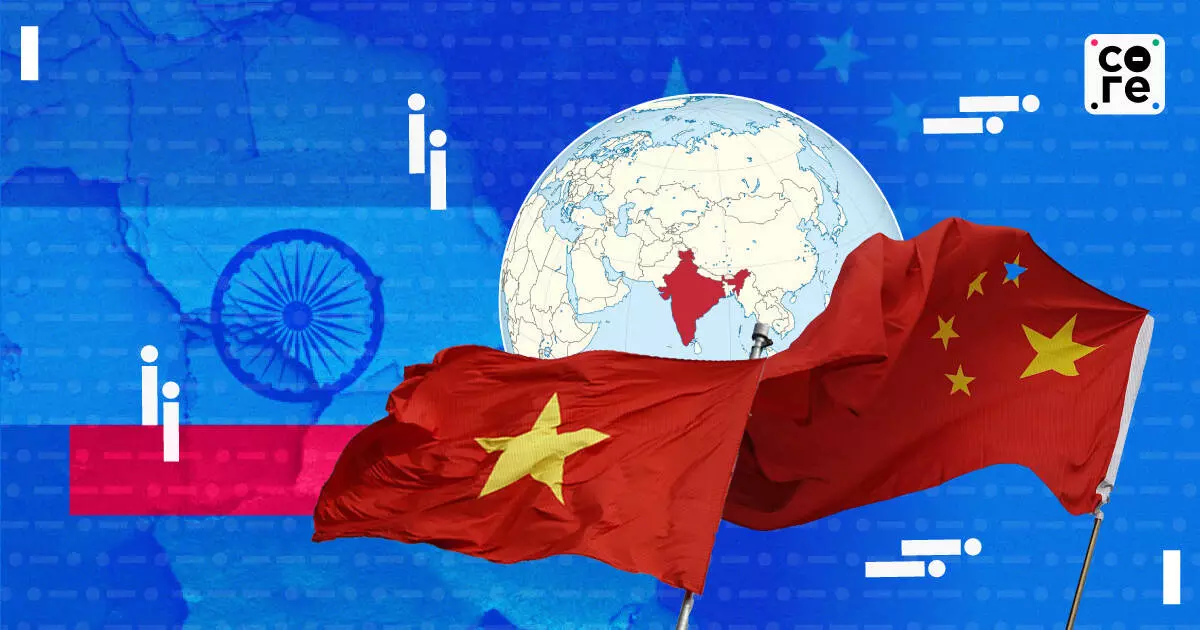
The China+1 Manufacturing Story Now Seems To Be A Fading Dream
The post-Covid hope for India's manufacturing boom fades as China's market recovery signals the end of China-plus-one.

In July, India’s commerce and industry minister Piyush Goyal said in a virtual interaction with the Indian diaspora in the United States that a China-plus-one and an anywhere-but-China (ABC) thinking in the developed world was encouraging people to look at India. This was apart from India’s efforts to attract manufacturers to the country, The Economic Times reported the minister as saying.
Last week Goyal told The Times Of India that India's manufacturing prowess was driven by its own competitive advantages, and not by reliance on any China-plus-one strategy. He was speaking in the context of a decade of India’s own ‘Make In India’ efforts.
"At that time, there was no China-plus one, or no anti-China mood. We've been successful in all of this, despite two wars, despite two years lost in Covid, we've achieved all of the above," the minister said.
This seems to be a shift in policy. Goyal however was only reflecting what industry has been saying for some time now. India’s China-plus-one strategy of attracting global companies to move supply chains to India has not really worked, at least to the extent we thought it would or hoped. To be fair, this is not for lack of trying.
The pendulum has only swung further away. A report by the Delhi-based Global Trade Research Institute a few months ago pointed out that imports from China have been consistently rising, from $70 billion in 2018-19 or five years ago to around $101 billion last year. India’s total imports last year were around $677 billion of which around $101 billion came from China, or almost 15%. India’s own exports to China were holding around $16 billion for the last five years.
The numbers get much starker as you dive in. In some sectors like electronics, telecom and electrical products, 38% of India’s imports came from China. In machinery, 40% of products came from China. In chemicals and pharmaceutical imports, some 29% came from China. Despite India’s myriad efforts to boost manufacturing, including production linked incentives and other subsidies, China’s stake in the country’s product economy is obviously increasing.
On the other hand, for the last few years, China’s economy has been under pressure, including slowing demand. There have also been significant geopolitical shifts, thanks to countries like the US stepping up tariffs against China and encouraging multinationals to develop alternative sourcing strategies. This gave hope to other countries, including India, that manufacturing could be moved out of China, as the trade minister’s July statement suggested.
Now it looks like China might be back in the game. On Monday, Chinese stocks swept to their biggest single-day gains in 16 years. The CSI300 blue-chip index, China’s benchmark stock index, is now up nearly 30% from its February bottom, which by some market definitions suggests it is in a bull market. The rally in Chinese stocks has come after Beijing announced aggressive stimulus measures last week to pull up its flailing economy. These ranged from outside rate cuts to fiscal support, Reuters said.
The People's Bank of China's (PBOC) also introduced two fresh tools to shore up the stock markets, pushing up stocks which had been stagnant for several years. "It's really a big turnaround, the policies are so intensive, we have never seen such clear instruction to stop housing prices declining and support the stock market," Dickie Wong, executive director of research at Kingston Securities, told Reuters.
There is obviously some understanding already in India that while manufacturing will grow in India for various reasons, the China factor seems to be receding. Lighting up India’s manufacturing sector is not an easy task, regardless of which government claims what. The problems plaguing manufacturing investment and expansion have been around for long and range from high costs including land, labour and capital to weak infrastructure and of course cumbersome laws.
There are several manufacturing successes in India, domestic and export oriented but it is not clearly enough, including to absorb more surplus labour. The one factor where India could focus on is to make it cheaper and more competitive to build locally rather than by erecting tariff walls as we have done in the last decade.
Ten years ago, average tariffs were 13%, today they are 18%, amongst the highest in the world and double of countries like China and Vietnam. Reducing tariffs — since exports also contain imported raw materials — is not the only approach to overall manufacturing growth but one that we need to revisit with some urgency.
The post-Covid hope for India's manufacturing boom fades as China's market recovery signals the end of China-plus-one.
Zinal Dedhia is a special correspondent covering India’s aviation, logistics, shipping, and e-commerce sectors. She holds a master’s degree from Nottingham Trent University, UK. Outside the newsroom, she loves exploring new places and experimenting in the kitchen.

